Sake Story for Wine Lovers: A Guided Tasting with Dutch Wine Apprentice
A Deep Dive Into Sparkling, Nigori, Genshu, Koshu, and Kijōshu
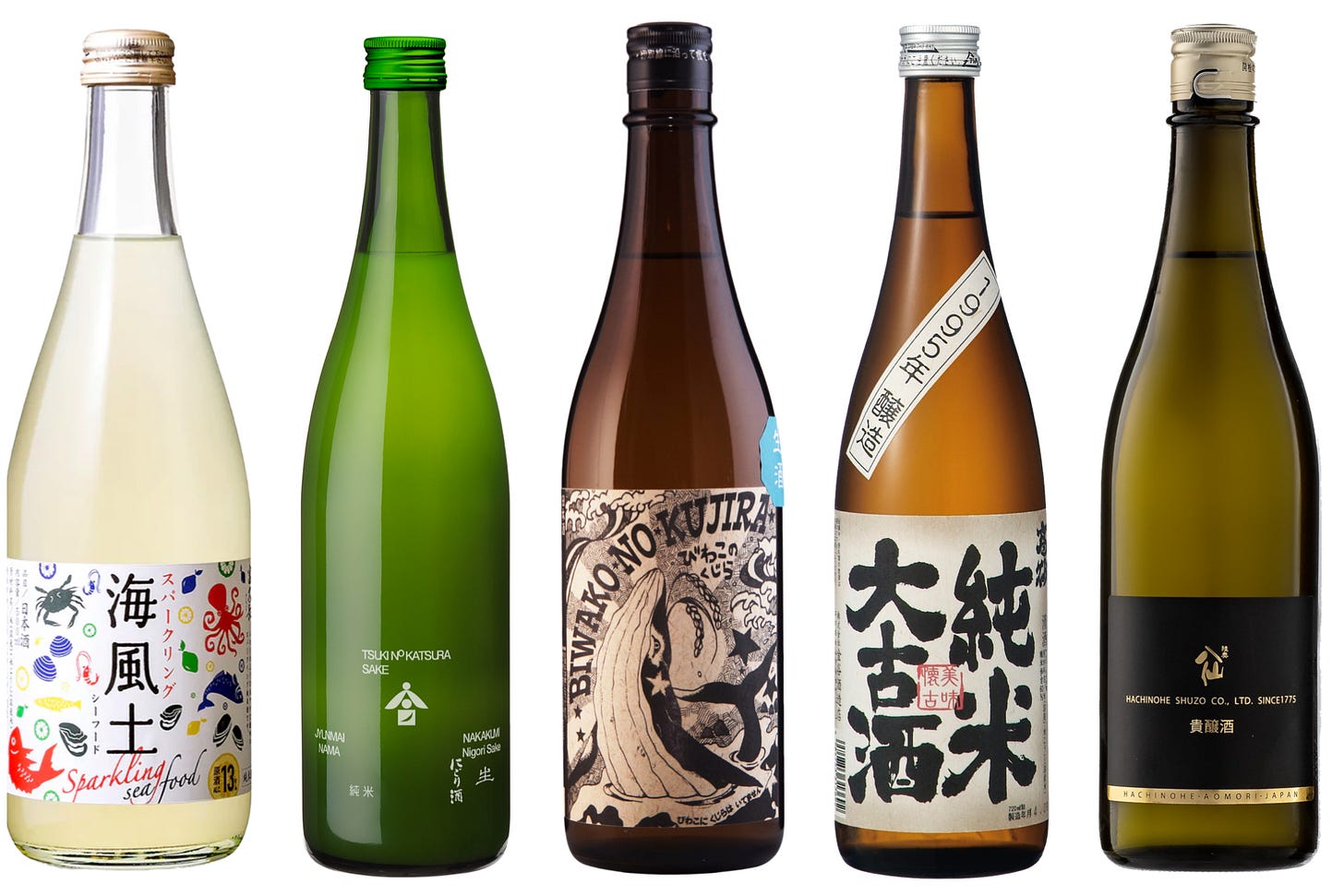
Do you enjoy Japanese sake in addition to wine?
Lately, we’ve noticed more and more wine lovers having an interest to the world of sake—whether it’s over a sushi dinner or when discovering that certain ingredients, like briny caviar or umami-rich oysters, pair even better with sake than with wine. For others, it’s simply about broadening their palate and diving into a wider world of fermentation, tradition, and flavor.
The surge in global interest is no coincidence. In 2024, Japanese sake was added to UNESCO’s list of Intangible Cultural Heritage, a designation that both celebrates its centuries-old craftsmanship and elevates its global reputation. Over the past decade, sake exports have grown steadily, now reaching more than 80 countries worldwide. Its rising popularity signals a shift—sake is no longer just Japan’s national drink, but a global beverage embraced by chefs, sommeliers, and curious drinkers alike.
However, for many, sake still feels unfamiliar—often thought of as a slightly sweet, high-alcohol, clear liquor served in tiny cups, with little recognizable variation. If that’s your impression, this article is for you.
As interest in sake continues to grow within the wine community, there’s a clear need for deeper, hands-on exploration. To meet that need, we hosted a sake tasting for the Dutch Wine Apprentice writing team where I contribute as a writer—featuring sommeliers, educators, and importers of wine—spotlighting five distinct styles: sparkling, nigori (cloudy), genshu (undiluted), koshu (aged), kijōshu (sweet) —each offering a uniquely different expression of sake. Each sake was chosen to showcase the incredible range of aroma, texture, and production techniques that set each style apart.
In this article, we introduce each of these styles and share candid impressions from our team. From unexpected favorites to flavors that challenged our assumptions, this tasting offered a fresh perspective on how wine and sake, while worlds apart, often speak the same language—just with a different accent.
This article is the second in a three-part series on Japanese sake, created in collaboration with Otemba Sake Amsterdam, a Netherlands-based importer specializing in artisanal sake. (If you missed the first installment, you can read it here.)
Tasting Setup: Professional Structure Meets Personal Discovery
As many members of the Dutch Wine Apprentice team hold WSET qualifications, we naturally approached this sake tasting with a WSET-style mindset—assessing appearance, aroma, palate, and drawing structured conclusions.
Yet beyond this clear and methodical framework, what proved even more engaging were the personal reactions: how each sake resonated on an individual level. We encouraged open feedback—what surprised us? What did we love, or not? Which styles sparked curiosity? These reflections often went beyond the tasting grid, and that’s exactly what made the experience so vibrant and rewarding.
In the following section, we introduce the lineup and share our team’s impressions—both analytical and emotional—starting with two very different expressions of sparkling sake.
1. Sparkling Sake – Seafood Sparkling (Imada Shuzo, Hiroshima Prefecture)
Sparkling sake is a relatively new style from the late 1990s that offers a completely different experience from traditional still sake. It's often considered a great entry point for wine lovers. The bubbles are created either through forced carbonation or in-bottle secondary fermentation, like in Champagne. Disgorged versions are clear and elegant, while cloudy, nigori-style versions that skip disgorgement offer a livelier, slightly rustic, more dessert-like profile.
The Seafood Sparkling we tasted was a lightly cloudy sake made by in-bottle fermentation. It had delicate rice and fruit aromas, with hints of herbs and white flowers. The refreshing mousse softened its full-bodied texture, and a touch of residual sugar added roundness and approachability.
Among the DWA wine professionals, this was the most popular sake. A touch of residual sugar is familiar to sparkling wine lovers. Its gentle bubbles and clean, lightly sweet style made it a standout—an easy and refreshing apéritif, even for wine lovers.
2. Sparkling Nigori Sake – Tsukino Katsura Junmai Nigori Sparkling (Masuda Tokubee Shoten, Kyoto Prefecture)
This is a more traditional style of sparkling sake, yet pushing the category even further into sensory territory unfamiliar to many wine drinkers. It’s visibly cloudier than the previous sake due to suspended rice particles. That turbidity creates a creamy, rich mouthfeel, sometimes slightly gritty, and gives the sake more weight and length on the palate.
Produced by Tsukino Katsura, a historic Kyoto brewery founded in 1675, this sake showcases the house’s expertise in aged and cloudy styles. It’s crafted with in-bottle secondary fermentation, resulting in natural carbonation and a slightly off-dry finish. The nose offers a layered mix of green apple, strawberry, steamed rice, yogurt, and almond. On the palate, it’s full-bodied, rich, and creamy, balanced by bright acidity and soft mousse.
Reactions from the team were diverse, reflecting the sake’s unique personality. Some found it fun and indulgent—perfect for adventurous pairings or as a dessert alternative. Others found the sweetness and bitter texture at the end more challenging.
A lively discussion followed around its gastronomic potential. Its creamy texture and gentle sweetness could pair naturally with lightly fried dishes like tempura or raw fish (sashimi), as well as fruit-based desserts and soft cheeses. Its boldness was also seen as a good match for sweet-and-savory Asian flavors. Overall, this sake sparked one of the most thought-provoking conversations of the tasting, highlighting the creative possibilities of sake in food pairing.
3. Genshu (Undiluted Sake) – Miyasakae Biwako no Kujira Muroka Nama Genshu (Kitajima Shuzo, Shiga Prefecture)
Genshu refers to sake that has not been diluted with water after fermentation, typically resulting in a higher alcohol content—usually around 17–20%. Most sake is adjusted to 15–16% ABV by adding water post-fermentation (or recently by managing fermentation itself), but mostly genshu retains its full strength and flavor. This style is valued for its intensity, structure, and concentration, which are well-balanced by the elevated alcohol. Depending on the producer, genshu can range from dry to sweet, but it consistently delivers more weight and impact on the palate.
This particular genshu, Miyasakae Biwako no Kujira Muroka, is even more distinctive. Not only is it undiluted, but it is also made without charcoal fining or pasteurization. Fining is often used to lighten the color, texture, or aroma—creating the crisp, dry, water-clear sake style once favored for commercial appeal. Pasteurization, on the other hand, helps stabilize the product in exchange for freshness and a liveliness. By skipping both, this sake maintains a richer, bolder, and more vibrant character, with heightened umami and texture.
While the elevated alcohol might come as a surprise to those more accustomed to wine or traditional sake styles, it also opens up new sensory possibilities. Some members suggested serving it over ice to round out the edges and highlight its complexity—a recommendation also echoed by the importer. What stood out most, however, was its purity, structure, and unapologetic intensity—resonating deeply with those who appreciate bold fortified wines, or sake that dares to show its full character.
4. Koshu (Aged Sake) – Takasago Junmai Ookoshu 1995 (Kanaya Shuzo, Ishikawa Prefecture)
Aged sake, or koshu, refers to sake that has been intentionally matured—often for several years—to develop deeper, more complex flavors and a well-rounded texture. Unlike most sake, which is best consumed young and fresh, koshu embraces the passage of time, allowing Maillard reactions between sugars and amino acids to create notes of caramel, dried fruits, honey, roasted nuts, and earthy nuances. There is no official regulation for what qualifies as "aged sake," leading to a wide range of styles depending on the producer.
This particular example, Takasago Junmai Ookoshu 1995, has been aged for nearly three decades under carefully controlled conditions. It is brewed with Gohyakumangoku, a sake-specific rice polished to 60%. This is a sake that highlights the category’s full potential —still relatively niche even in Japan.
This sake offers remarkable depth with Madeira-like aromas of caramel, soy sauce, roasted almond, molasses, toasted grains, and umami-rich broth. On the palate, it’s smooth yet structured, with fresh acidity balancing subtle residual sugar. Despite its sweetness, it feels dry and savory, finishing long with notes of dried figs and bittersweet molasses. A captivating aged sake that will intrigue fans of oxidative wines like Madeira or oloroso sherry. Best enjoyed slightly chilled or gently warmed to reveal its complexity.
5. Kijōshu (Sweet Sake) – Mutsu Hassen Kijōshu (Hachinohe Shuzo, Aomori Prefecture)
Kijōshu is a rare and luxurious style of sake made by replacing part of the brewing water with finished sake. This distinctive method allows fermentation to continue under elevated alcohol conditions, which naturally slows down yeast activity and prevents the sake from fermenting to full dryness. The result isn’t particularly high in alcohol, but it is rich, viscous, and sweet, with high amino acid content and deep complexity—often compared to noble rot wines like Sauternes or Tokaji.
Mutsu Hassen Kijōshu is a modern, elegant take on the kijōshu style, bursting with sweet aromas of lemon candy, honeyed apple, guava, and cotton candy, lifted by hints of lemongrass and mint. The palate is rich and velvety, with medium sweetness balanced by vibrant acidity. Notes of honeydew and blood orange add tropical depth. Silky and smooth throughout, it lingers gracefully. A refreshing yet indulgent dessert sake with charm and complexity.
Some tasters found the dessert-like charm and its rich sweetness would it be a natural match for bold blue cheeses or caramelized desserts, offering a luxurious end to a meal. While a few noted that the sake’s naturally lower acidity can make the sweetness feel more prominent (too sweet).
Conclusion
Tasting with the team from Dutch Wine Apprentice was a thought-provoking experience. Each sake represented a distinct style, often showcasing extremes within its category—an intentional contrast to what most would consider “standard” sake. As expected, some tasters didn’t respond positively to all the samples, but that was part of the plan. Interestingly, many sommeliers discovered compelling pairing ideas for each style, highlighting sake’s versatility as a food-friendly beverage.
Sake is different from wine and doesn’t need to become wine—but it is undergoing a remarkable evolution that deserves attention. While wine boasts millennia of tradition, sake’s written history spans around 2,000 years—relatively young by comparison. Yet in that time, it has developed into a remarkably diverse category, rich in techniques and expressions. Some modern styles—like sparkling sake or kijōshu—clearly draw inspiration from the wine world, crafted to appeal to contemporary palates and global audiences. Others, such as genshu, nigori, muroka (unfiltered), and nama (unpasteurized), remain rooted in tradition but are being reinterpreted through modern brewing innovations. What we’ve explored is just a part of the world—a first glimpse into the breadth and personality of sake today.
In the final installment of this series, we’ll dive into kimoto and yamahai: traditional methods that represent the intersection of ancient craft and modern artistry.
These sakes are imported into the Netherlands by Otemba Sake and are available through selected retailers, hospitality partners, and their own restaurant, Utage Sake Bar, in Amsterdam. We thank Otemba Sake for providing the bottles and this wonderful opportunity.
Picture Credits: Otemba Sake and Kazumi Uejo
Every Tuesday, I dive into core sake topics from a wine-savvy perspective—grounded, clear, and always centered on flavor. On Fridays, I explore real-world food pairings that go far beyond the usual suspects—from Thai curries to miso-laced pastas.
Thanks for reading Pairing the World: Wine, Sake, and More! If you find my work valuable, you can support me by liking, commenting, stacking, or subscribing.
ワインラバーのための日本酒ストーリー:ワインプロ達と巡る5種のテイスティング
📍この投稿の意図
オランダ・アムステルダム在住の日本酒とワインの講師、Kazumi(DipWSET)です。
この投稿は、海外のワインのプロフェッショナルやワインラバー——たとえば、ワインショップのスタッフ、ソムリエ、ワインエデュケーター、ワインをプロ並みに楽しむといった方々に、日本酒の魅力をもっと知ってもらいたいという思いから執筆しています。
日本とヨーロッパ、両方の食文化を背景に、
「日本酒やワインの魅力を自分の言葉で伝えられるようになりたい」
「日本と海外の架け橋になりたい」
そんな願いを込めて、毎週英語で発信しています。
この日本語訳は、その取り組みを日本の皆さまに知っていただくために添えています。
ワインと同じくらい、日本酒も楽しんでいますか?
最近、寿司ディナーの場面だけでなく、ワインではなかなか難しいキャビアや牡蠣といった食材との相性を通じて、日本酒に興味を持つワインラバーが増えてきました。単に味覚の幅を広げたい、発酵や伝統、風味の世界をもっと深く知りたいという方もいます。
その関心の高まりは偶然ではありません。2024年には、日本酒がユネスコの無形文化遺産に登録され、何世紀にもわたる酒造りの技術と文化が世界的に認められました。この10年で日本酒の輸出は着実に伸び、いまや80か国以上に広がっています。日本酒はもはや「日本の国酒」にとどまらず、世界中の料理人やソムリエ、探究心旺盛な飲み手に愛される存在へと変化しています。
それでも、日本酒がまだ馴染みのない飲み物だと感じる方は多いはず。少し甘くてアルコール度数が高く、小さな器で飲む透明なお酒……そんなイメージがあるなら、ぜひ今回の記事を読んでみてください。
日本酒への関心がワインの世界でも高まる中で、もっと実際に手に取って、五感で理解する機会が求められています。そこで今回、私が寄稿している「Dutch Wine Apprentice」のライティングチーム向けに、特別な日本酒テイスティングを開催しました。参加者はソムリエ、ワイン教育者、インポーターなどワインのプロフェッショナルたち。テーマは、スパークリング、にごり、原酒、古酒、貴醸酒という5つのスタイル。それぞれの香り、質感、造りの違いを体感できるよう厳選した銘柄です。
本記事では、各スタイルの特徴と、参加者たちの率直なテイスティングコメントを紹介します。意外な人気酒、予想外の味わいの発見など、ワインと日本酒が「違う言語を話すが、同じ気持ちを伝えている」ような瞬間が何度もありました。
本記事は、アムステルダムを拠点とするクラフト日本酒のインポーター「Otemba Sake」とのコラボによる三部作の第2弾です。(第1弾をお見逃しの方はこちらからどうぞ。)
テイスティング形式:プロの視点と個人の発見
参加者の多くがWSET資格を持っているため、今回の試飲も「外観・香り・味わい・結論」というWSETの分析手法で進行しました。
しかし、それ以上に面白かったのは、それぞれの個人的な反応。驚き、好み、苦手、そして興味を惹かれたスタイルなど、自由なコメントを歓迎したことで、テイスティンググリッドを超えた生きた議論が生まれました。
以下、それぞれのスタイルとチームの印象を紹介していきます。まずは、対照的な2種のスパークリング日本酒から。
1. スパークリング酒 – シーフードスパークリング(今田酒造、広島県)
スパークリング日本酒は1990年代後半に登場した比較的新しいスタイルで、従来の静かな日本酒とはまったく異なる体験を提供してくれます。ワイン好きにとっては、入門に最適なスタイルとされており、炭酸ガスはシャンパーニュのように瓶内二次発酵または炭酸注入によって生まれます。澱引き(ディゴルジュマン)されたものはクリアでエレガントに、濁りタイプ(にごり)の場合は活き活きとして素朴な甘味が感じられるデザート風になります。
今回試飲した「シーフードスパークリング」は、瓶内二次発酵によるやや濁りのある一本。米と果実の繊細な香りに、ハーブや白い花のニュアンスが重なります。きめ細かな泡が厚みのある質感を和らげ、少量の残糖が丸みと親しみやすさを加えています。
DWA(Dutch Wine Apprentice)のワインプロフェッショナルたちの間でも、特に人気が高かったのがこのお酒。残糖感はスパークリングワイン愛好家にとって馴染みがあり、やさしい泡とすっきりした甘味がアペリティフとしてぴったり。ワイン好きにも受け入れられやすい一本でした。
2. スパークリングにごり酒 – 月の桂 純米にごりスパークリング(増田徳兵衛商店、京都府)
こちらはより伝統的なスパークリングスタイルですが、同時にワインの世界では馴染みのない感覚領域へと踏み込む一本でもあります。先ほどのスパークリングよりもはっきりと濁りがあり、浮遊する米粒によってクリーミーで濃厚な口当たりが生まれ、わずかなざらつきとともに、口中に重みと余韻を与えます。
1675年創業という歴史ある京都の蔵「月の桂」によるこの酒は、古酒やにごり酒に定評のある造り手の技術が光る一本。瓶内二次発酵により自然な炭酸が生まれ、やや甘口の仕上がりです。香りは青リンゴ、イチゴ、蒸し米、ヨーグルト、アーモンドなどが層をなして広がります。口に含むと、ふくよかで濃厚かつクリーミー。しっかりした酸とやわらかな泡がバランスを取ります。
チームの反応は実に多様で、この酒の個性的なキャラクターを如実に表していました。「楽しく贅沢な一本」と評価する声もあれば、甘味と最後のほろ苦さが難しいという意見も。
特に盛り上がったのは、その食中酒としての可能性について。天ぷらのような軽い揚げ物や刺身、果物を使ったデザート、やわらかいチーズなどに自然と寄り添いそうだという意見が出ました。甘辛いアジア料理との相性も良いのではという声もあり、今回のテイスティングで最も議論を呼んだ一本となりました。
3. 原酒(げんしゅ)– 美冴酒 琵琶湖のくじら 無濾過生原酒(北島酒造、滋賀県)
「原酒」とは、発酵後に加水してアルコール度数を調整せず、仕込みそのままの強さを保った日本酒のこと。一般的な日本酒は15〜16%のアルコール度数に調整されますが、原酒は17〜20%ほどの高めの度数で、濃厚で骨格のある味わいが特徴です。ドライなものから甘口までスタイルは多彩ですが、どれも口に含んだときのインパクトは格別です。
今回試飲した「琵琶湖のくじら 無濾過生原酒」はさらに個性的。加水されていないだけでなく、炭素ろ過も火入れ(加熱殺菌)も行っていない、まさに“ありのまま”の酒です。ろ過は通常、色味や香り、質感をクリアに整えるために使われますが、この酒はそれを行わず、旨味や香りをそのまま残しています。また火入れを省くことで、酒にフレッシュさと生き生きとした活気を残しています。
ワインや一般的な日本酒に慣れている方には、やや驚きの強さかもしれません。しかしその分、力強い個性と深い旨味が魅力。インポーターの勧めもあり、氷を浮かべて飲むことで角が取れて味わいがまろやかになるという提案も。
今回のテイスティングでも「ストレートな力強さ」「ピュアで構造的」「堂々とした濃密さ」などのコメントがあり、特にフォーティファイドワイン(酒精強化ワイン)や、しっかりとした主張のある酒を好む人たちには強く響いていました。
4. 古酒(こしゅ)– 鷹翔 純米大古酒 1995(加越酒造、石川県)
古酒とは、その名の通り長期間熟成させた日本酒のこと。一般的な日本酒はフレッシュなうちに飲むことが推奨されますが、古酒は時間の経過とともに旨味や複雑さを増し、丸みのある味わいへと変化します。熟成中には、糖とアミノ酸が反応するメイラード反応によって、キャラメルやドライフルーツ、蜂蜜、ローストナッツ、土っぽさなどの風味が生まれます。
ただし、日本酒における「古酒」の定義は明確に定められておらず、生産者ごとにスタイルは大きく異なります。
今回の「鷹翔 純米大古酒 1995」は、約30年もの間、管理された環境で熟成された一本。原料米は五百万石、精米歩合は60%。古酒の中でも、ここまでの長期熟成例は日本国内でも珍しく、その真価を存分に示してくれる酒です。
香りはキャラメル、醤油、ローストアーモンド、モラセス(糖蜜)、トーストした穀物、旨味のあるだしのような香りと、マディラワインを思わせる熟成香が広がります。味わいはまろやかでありながら構造的。やや残糖感があるものの、しっかりとした酸が全体を引き締め、ドライで塩気を感じる後味へと導きます。
干しイチジクやビターな糖蜜のような余韻が長く続き、酸化熟成タイプのワイン(マディラやオロロソ)を好む方にはとても魅力的に映る一本。軽く冷やすか、ぬる燗で飲むのがおすすめです。
5. 貴醸酒(きじょうしゅ)– 陸奥八仙 貴醸酒(八戸酒造、青森県)
貴醸酒は、日本酒の中でもとくに贅沢で希少なスタイル。仕込みの途中で、水の代わりにすでに完成した日本酒を一部使うという特異な製法で造られます。この方法により、発酵中のアルコール度数が高く保たれ、酵母の活動が自然と抑制されることで、発酵が完全に進まず甘みが残るのです。アルコール度数自体はそれほど高くはありませんが、濃密でとろみのある質感、豊かな甘味、そして高いアミノ酸含有量による複雑な風味が特徴。貴腐ワイン(ソーテルヌやトカイ)と比較されることもあります。
陸奥八仙のこの貴醸酒は、現代的かつ洗練された仕上がり。レモンキャンディ、はちみつをかけたリンゴ、グアバ、綿あめといった甘い香りが広がり、そこにレモングラスやミントの爽やかなニュアンスが重なります。口当たりはとろけるように滑らかで、ミディアムな甘さにしっかりとした酸が寄り添い、ハチミツメロンやブラッドオレンジのようなトロピカルな味わいが感じられます。フィニッシュまで絹のようになめらかで、軽やかさと贅沢さを併せ持つデザート酒です。
チームからは、「まるでデザートのようなチャームに惹かれた」「ブルーチーズやキャラメリゼしたデザートに合わせたい」という声も多く、食後酒としてのポテンシャルが高く評価されました。一方で、「酸が低めなので、甘さが強く感じられる」との意見もありました。
総括:ワインプロと共に見た、日本酒の多様性と可能性
今回、Dutch Wine Apprenticeのチームとともに行ったテイスティングは、非常に刺激的で学びに満ちた体験でした。それぞれの日本酒がはっきりとした個性を持ち、スタイル内でも極端な特徴を示すものをあえて選んだことで、いわゆる「標準的な日本酒」とは一線を画すラインナップになりました。
当然ながら、全員がすべての酒を気に入ったわけではありません。しかしそれも狙いのひとつでした。むしろ、参加したソムリエたちが、それぞれの酒に対して「この料理と合いそう」「このスタイルはこう使えるかも」と、具体的なペアリングのアイデアを多く出してくれたことこそ、日本酒がいかに食との相性に優れた飲み物であるかを物語っています。
日本酒はワインとは異なる飲み物であり、ワインになる必要はありません。しかし今、日本酒は世界中で驚くほどの進化を遂げています。ワインが何千年にもおよぶ歴史を持つのに対し、日本酒の文献に残る歴史は約2000年と比較的若いジャンル。それでも、今や日本酒は非常に多様なカテゴリーへと発展しており、造りの技術も表現の幅も実に豊かです。
スパークリングや貴醸酒のように、ワインの世界に影響を受けたスタイルもあれば、原酒・にごり・無濾過・生酒といった伝統的な手法を現代的な解釈で再構築しているものもあります。今回の試飲は、そんな広大な日本酒の世界のほんの入口にすぎません。
次回はいよいよシリーズ最終回。伝統的な酒母造りである「生酛(きもと)」と「山廃(やまはい)」に焦点を当て、古来の技と現代のクラフトマンシップが交差する世界を掘り下げていきます。
今回紹介したお酒は、いずれもオランダの「Otemba Sake」が輸入しており、厳選された酒販店やレストラン、またアムステルダムの自社経営店舗「Utage Sake Bar」などで購入・体験可能です。ボトルの提供とこの素晴らしい機会をくださったOtemba Sakeに心より感謝します。
写真提供:Otemba Sake / Kazumi Uejo
読んでくださってありがとうございます!
この投稿は、ワインの視点から日本酒を学ぶ「Tuesday Sake 101」シリーズの一部です。
「Pairing the World: Wine, Sake, and More!」は、ワインと日本酒の世界をつなぐブログです。
この投稿が、日本酒とワインをつなぐ新しい視点として楽しんでいただけたなら嬉しいです。応援したいと思っていただけた方は、ぜひ「いいね」や「コメント」、ご購読(Subscribe)でサポートしていただけると励みになります。🍶🍷
なお、本シリーズにてご紹介したい日本酒や、海外向けにラインナップをご紹介希望のインポーター様・酒蔵様からのご連絡もお待ちしております。



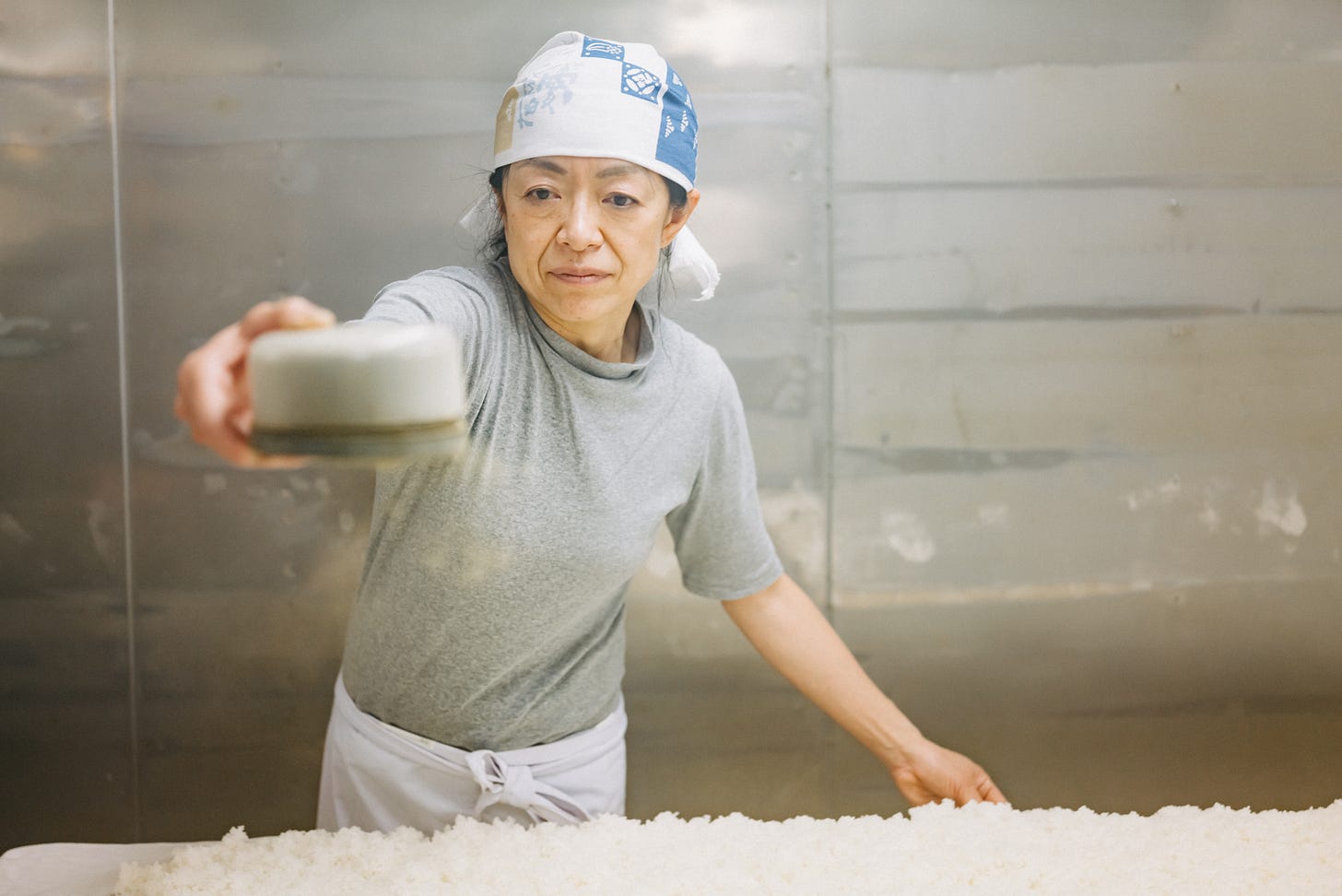
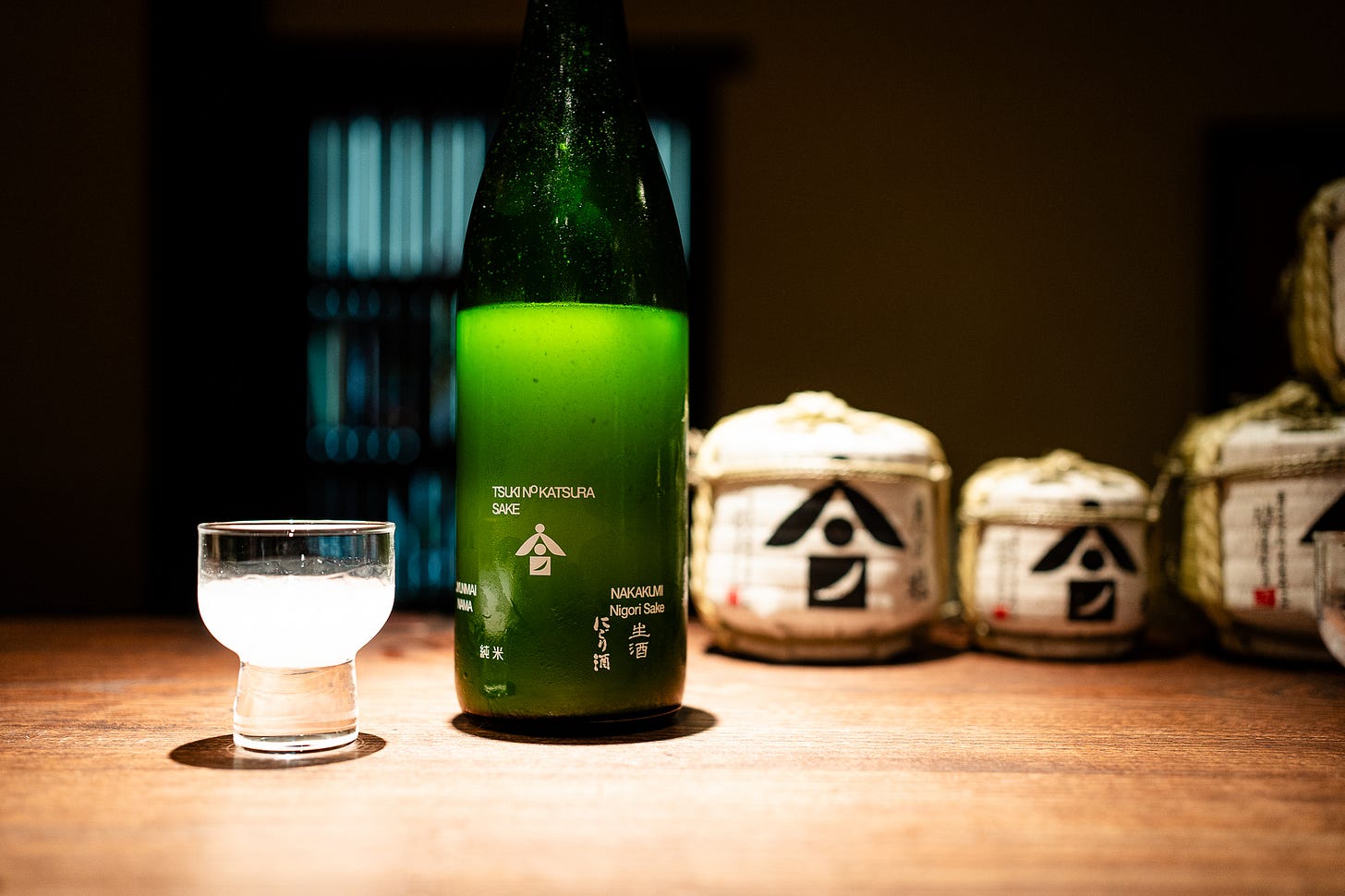

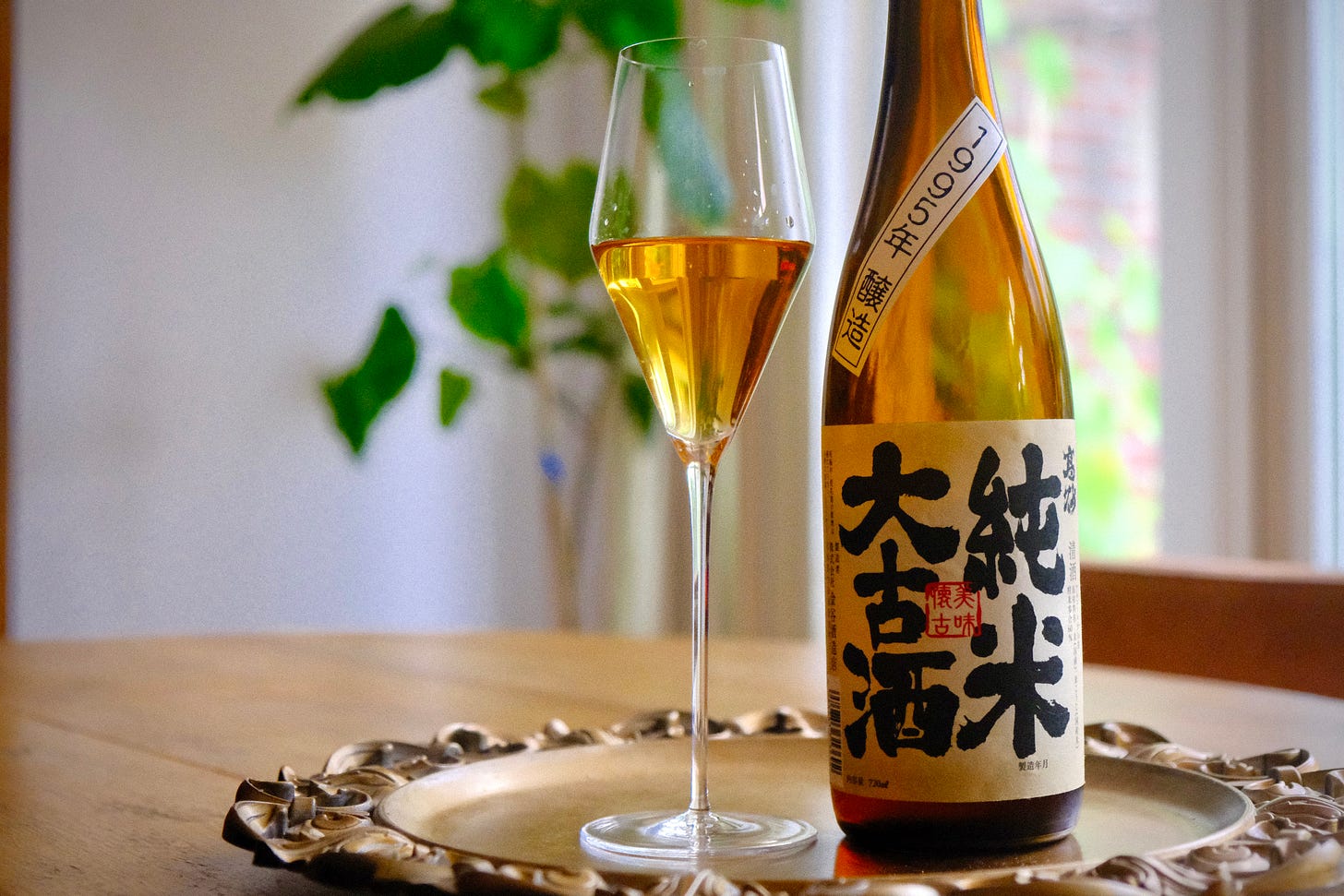
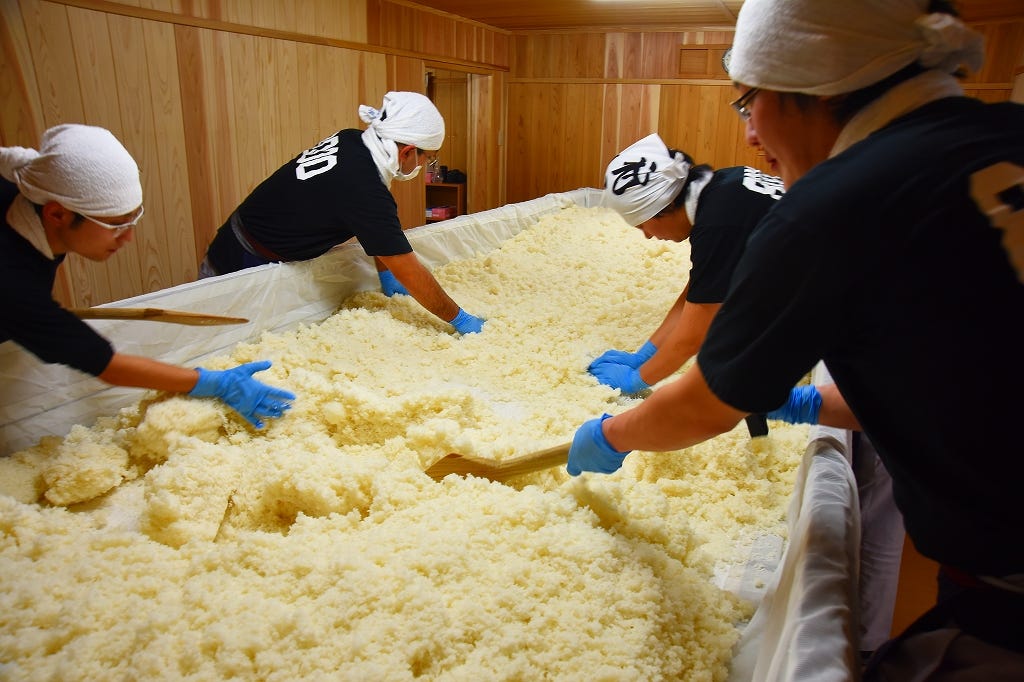
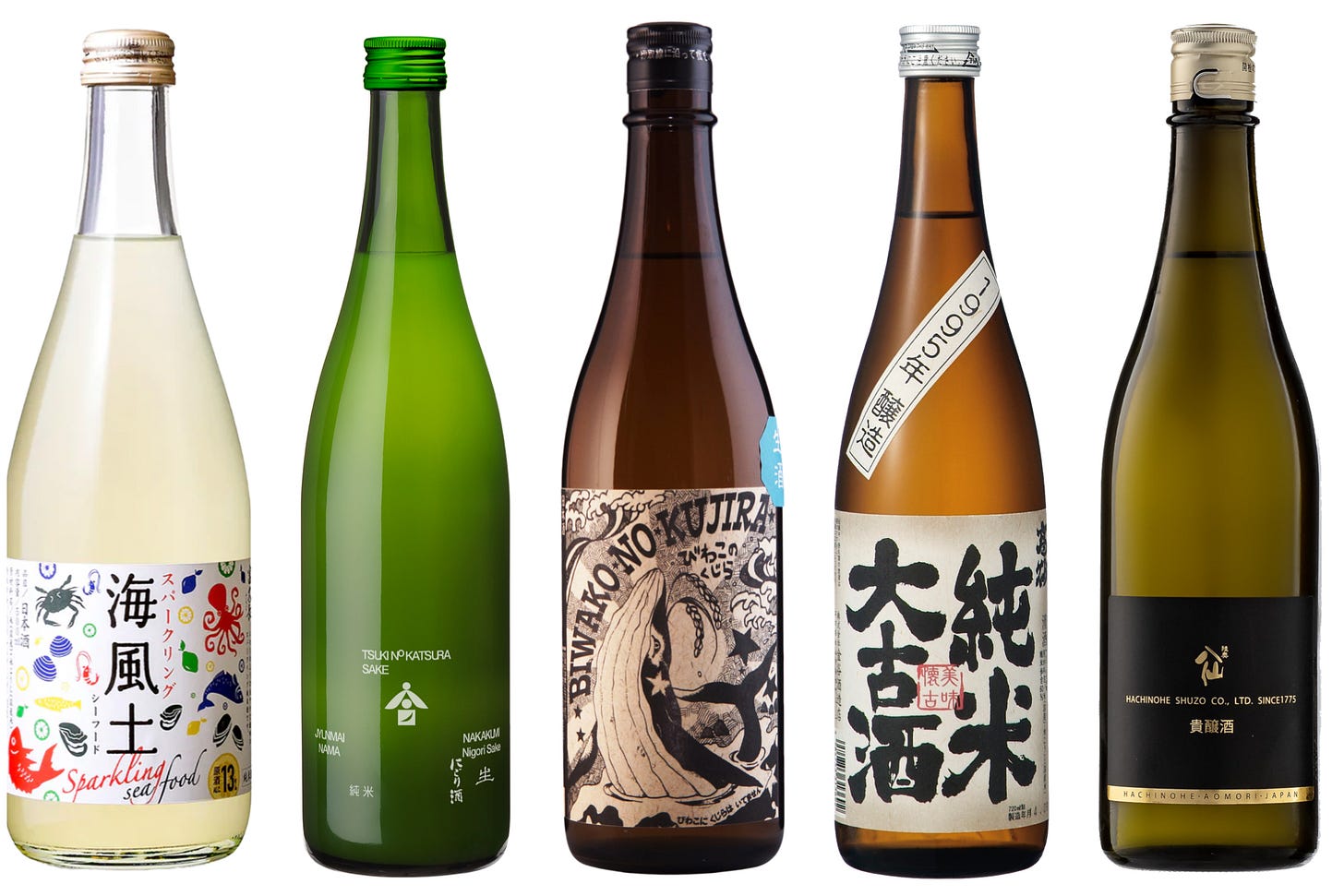
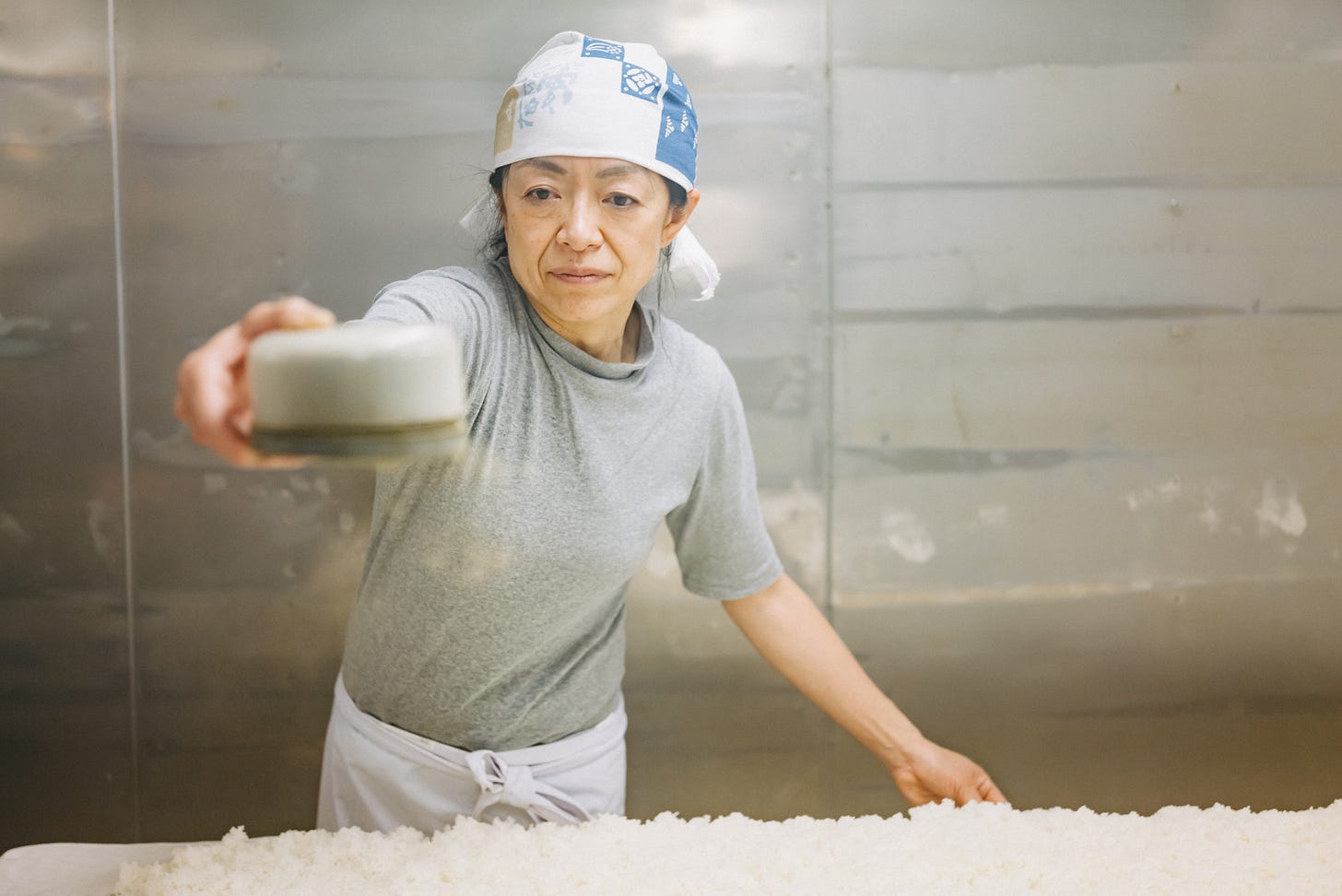
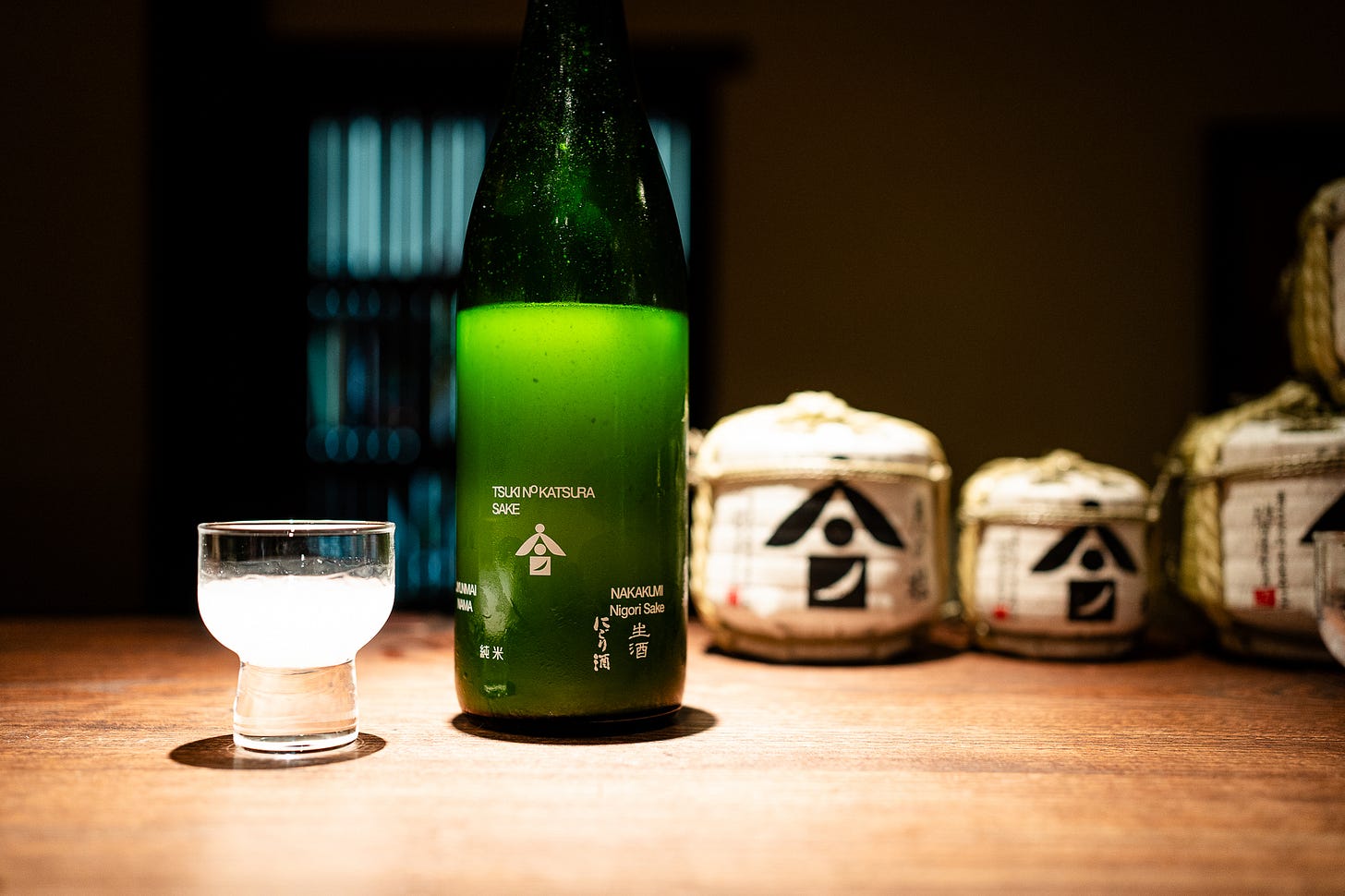

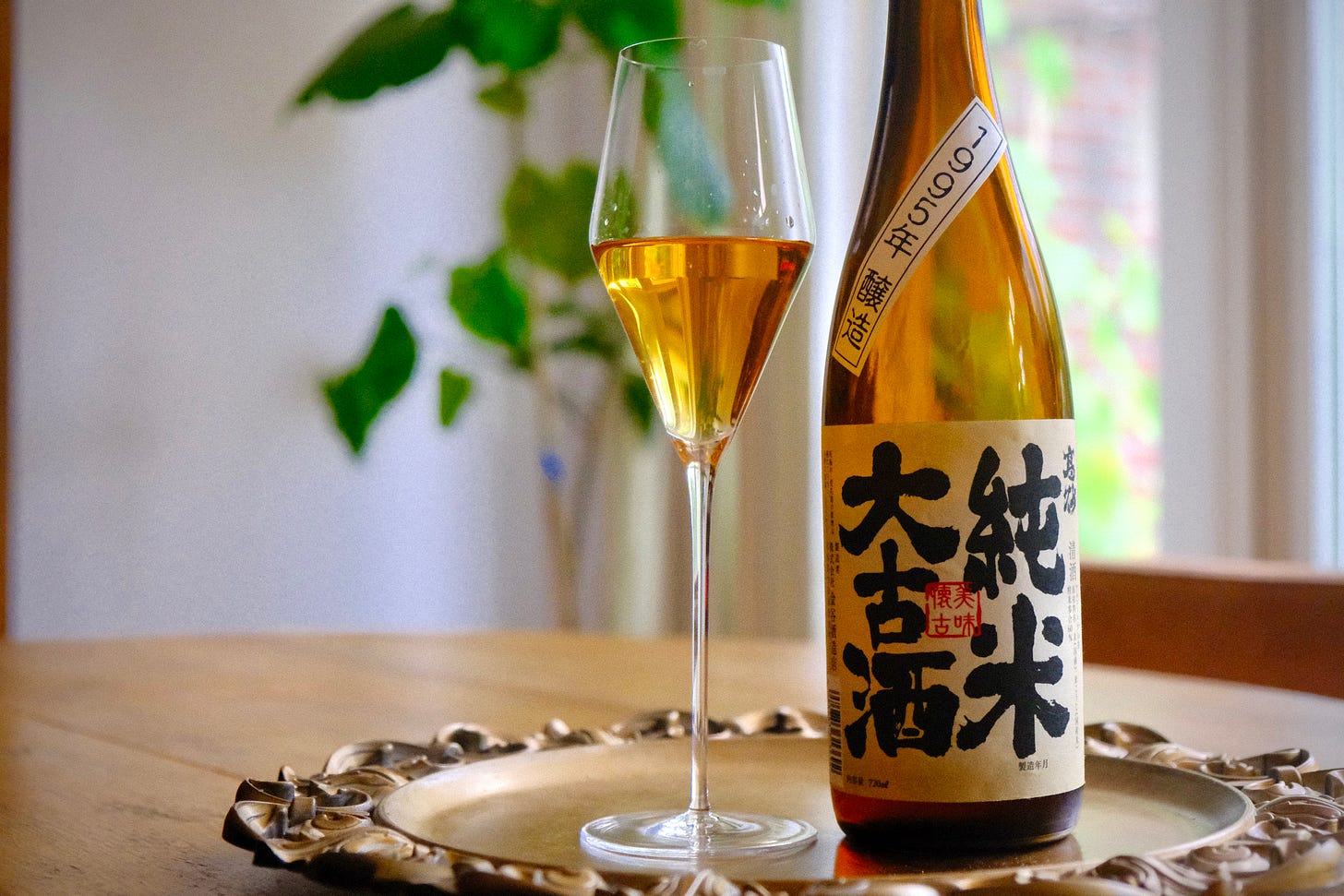

Oooh when was this? Gutted I missed it - would love to join next time!